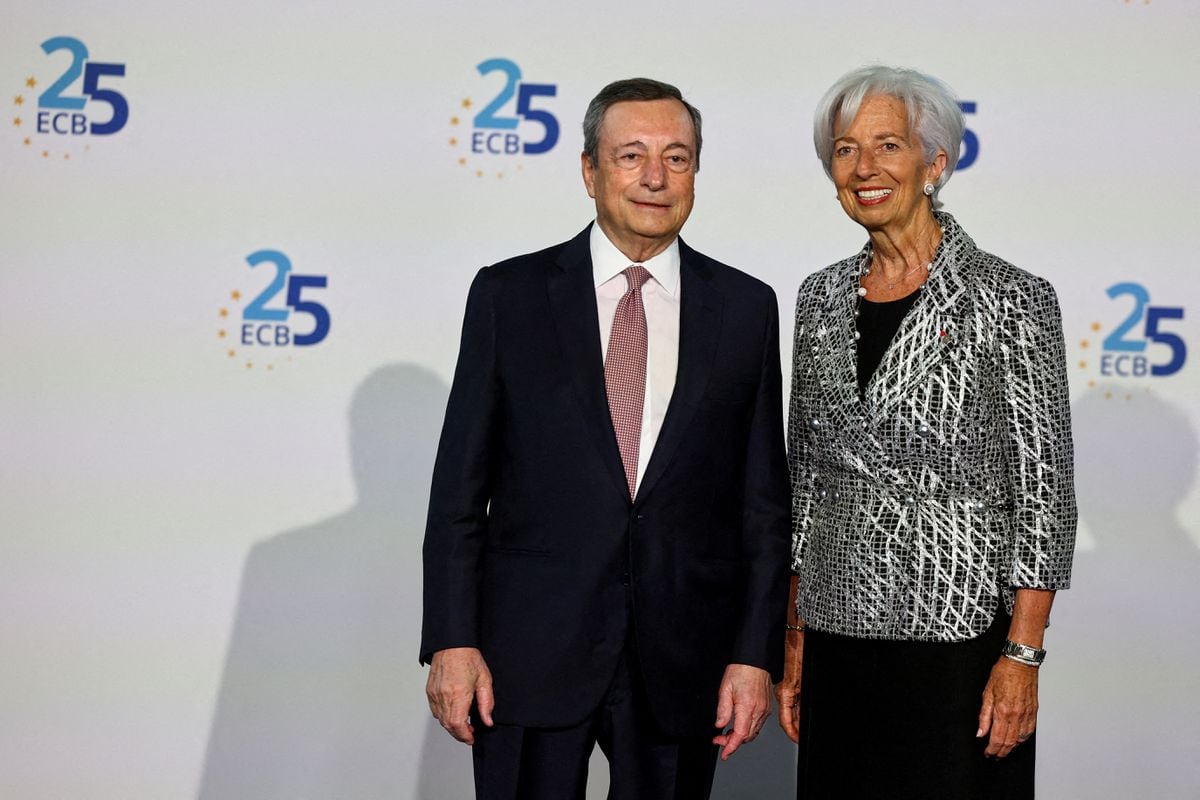It is very likely that, just three years ago, most of the readers of this article were confined to their homes.
These were times of pandemic, of sadness and collective fears, and also of gloomy predictions about what awaited the world as we knew it.
In some cases, the reality would be even worse than the omens and the war would return to European soil in February 2022. But there is at least one thing in which the predictions failed: neither the coronavirus, nor the productive bottlenecks, nor the invasion of the Ukraine, nor the energy supply problems have ended economic globalization.
Measuring this is the objective of the
Global Connectivity Index
prepared annually by DHL and the Stern School of Business at New York University.
And the main conclusion for the 2022 edition, presented this Wednesday, is that the phenomenon has recovered the intensity of 2019 despite the evident cooling of relations between the US and China.
Spain, due to the lower flow of tourists, dropped four positions compared to four years ago in the ranking of 171 countries.
"After a slight decline in 2020, the index rebounded above pre-pandemic levels in 2021, and the data available so far point to a further increase in 2022," the study summarizes.
“International flows have proven remarkably resilient in recent crises, strongly refuting the idea that globalization has started to go backwards.”
However, the report also detects movements that defy the logic of globalization, such as the growing tension between the two largest world economies, the United States and China, or the trends towards economic regionalization, since approximately half of international exchanges are between countries in the same geoeconomic area.
Regarding the trade war between Washington and Beijing, the study admits that the conflict in Ukraine and the tensions over Taiwan have increased "the fear of a new cold war that will fracture the global economy into rival blocs."
And he finds "clear signs of decoupling" between the two superpowers.
Eight of the 11 flows of all kinds (from goods to people or scientific collaborations) between the US and China have fallen since 2016. In the opposite direction, the same thing happens in seven of the 10 categories analyzed (the index does not have arrival data of tourists by the Asian giant).
And yet, the authors emphasize, there are not two countries in the world that do not share a land border between which there is a greater volume of exchanges.
Regarding regionalization, the analysis highlights that this did not occur, when the pandemic suggested that it could be so.
But Steven A. Altman, a senior fellow at New York University and a co-author of the report with his colleague Caroline R. Bastian, said in the presentation that "it remains to be seen whether trade patterns will significantly regionalize in the future." ”.
This is so, he explained, because "many companies and governments are concentrating on finding nearby suppliers (
nearshoring
) to regionalize supply chains, and there are substantial benefits for businesses that can come from regionalization"
lagging tourism
A clear example of the return to what is close has been in tourism, although forced by the circumstances of the pandemic and international travel restrictions.
This is, of the four pillars studied, the one that continues to suffer the most compared to the pre-Covid era.
In 2022, it was still 37% below the levels of 2019, although at the same time the volume of international travelers doubled compared to 2021. It is, therefore, a field where there is room for globalization to recover muscle.
Although, due to the slowdown in economic growth, it could lose it in the other sections.
In addition to the flows of people (tourism, international students, emigration), the index also includes information (broadband internet, scientific collaboration...), capital and purely commercial flows.
Europe is, as usual, the world champion of globalisation.
Eight of the 10 countries with the greatest global connectivity belong to the Old Continent, with the Netherlands one more year in the lead.
The only non-Europeans are Singapore (2nd position in the world) and the United Arab Emirates (6th), where the index was presented this year, taking advantage of a visit to the DHL Innovation Center for the Middle East, which EL PAÍS attended at the invitation of the company along with other European media.
The trailing positions are dominated by sub-Saharan African nations.
For each of the 171 countries analyzed, two large connectivity parameters are measured: depth (the weight of international flows with respect to the size of their economy) and breadth (the distribution of these flows throughout the world).
Spain falls positions
Spain scores 68 points, the same as in 2019, but due to the progress of other countries, it drops four places and is 26th in the standings.
And it is positioned better in breadth (21st) than in depth (66th).
France, Germany, the United Kingdom, Luxembourg and Italy are, in that order, the territories with which there are the most exchanges.
Among all the parameters studied, Spain ranks first in the world in terms of opening capital accounts (a concept that is related to the degree of international investment), but its status as a tourism superpower (second most visited country in the world in 2019) weighs down its overall score as it is a sector that has not yet recovered.
“Globalization is not just a buzzword, it is a powerful force that has transformed our world for the better,” John Pearson, CEO of DHL Express, the main division of the Deutsche Post DHL group, said at the presentation.
The German parcel and logistics giant, with a global presence in 220 countries and nearly 395,000 employees, has an obvious interest in making the world increasingly interconnected and is therefore allied with the New York University business school. York to develop this index, which was first published in 2011.
Follow all the information on
Economy
and
Business
on
and
, or in our
weekly newsletter
Subscribe to continue reading
Read without limits
Keep reading
I'm already a subscriber

/cloudfront-eu-central-1.images.arcpublishing.com/prisa/GXDCTDXTQPWJTUKAJAQ74IFV3Q.jpg)





/cloudfront-eu-central-1.images.arcpublishing.com/prisa/DH2SXR3OWJG27DGCQVSC5AQDNE.png)
